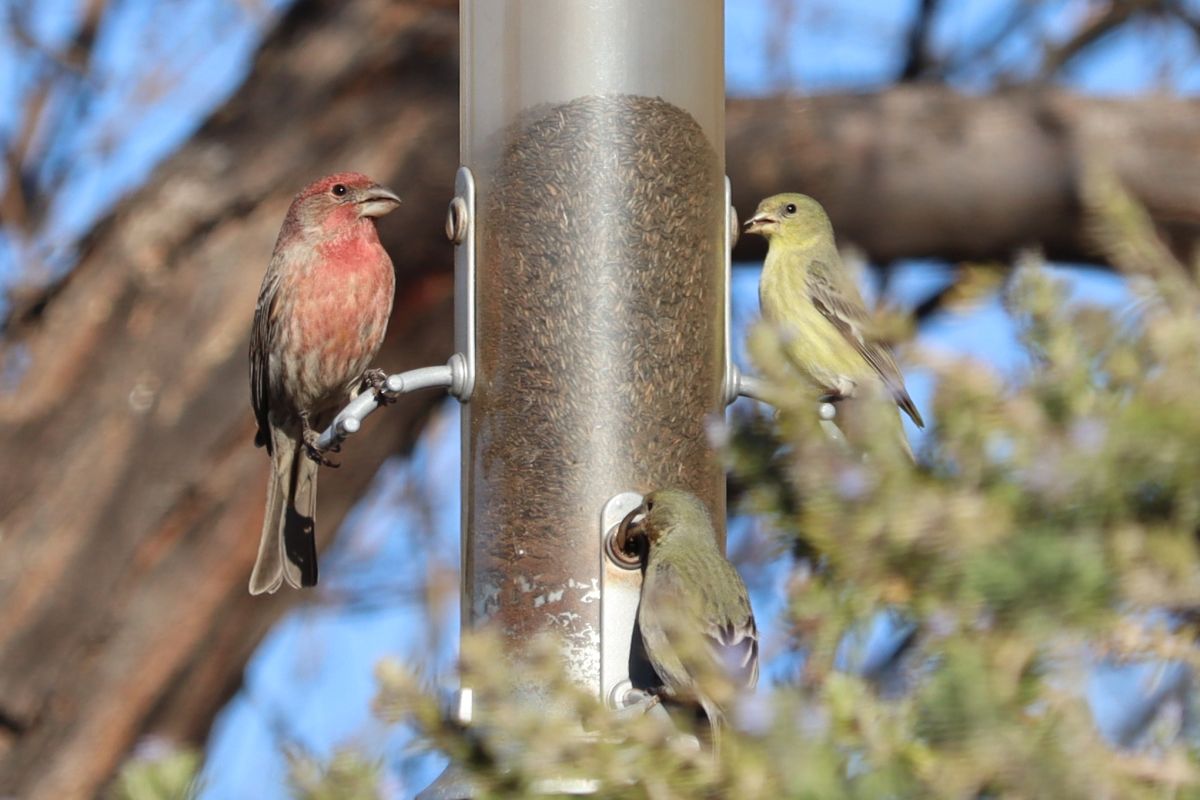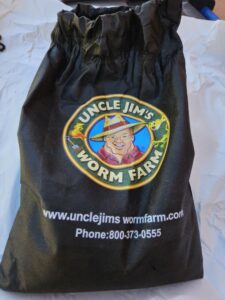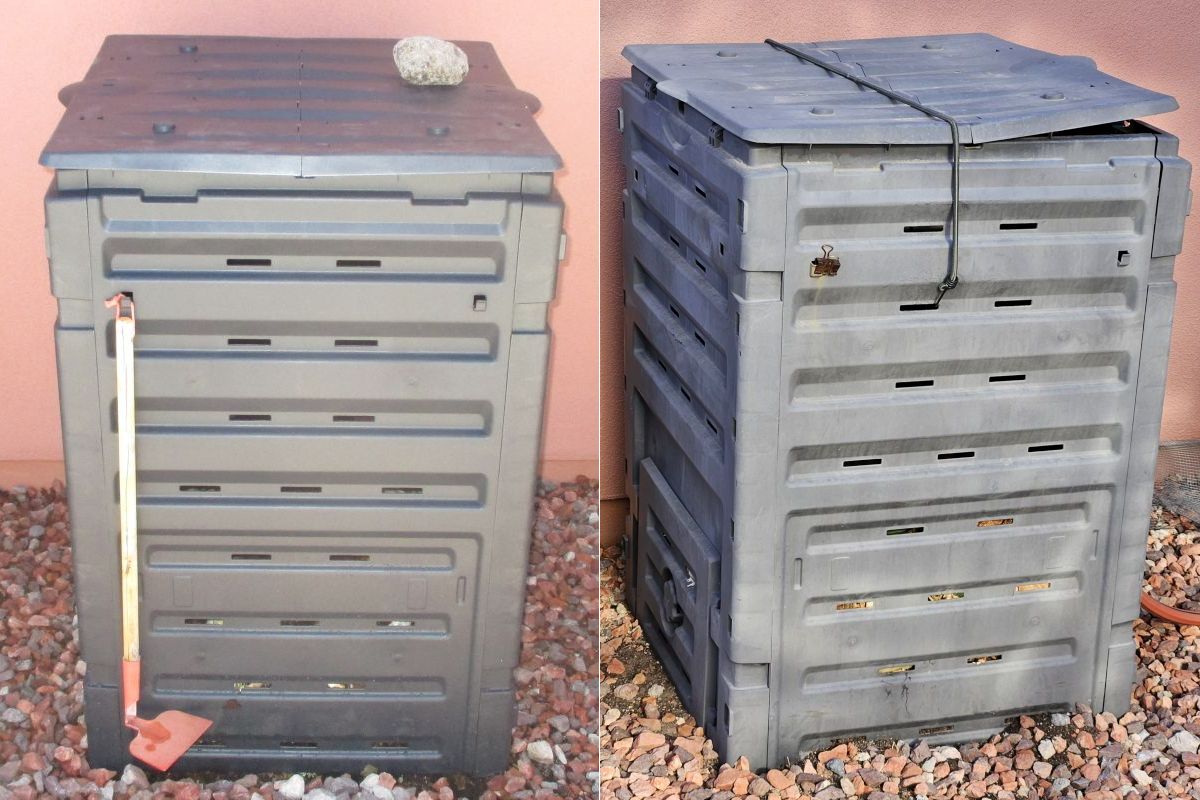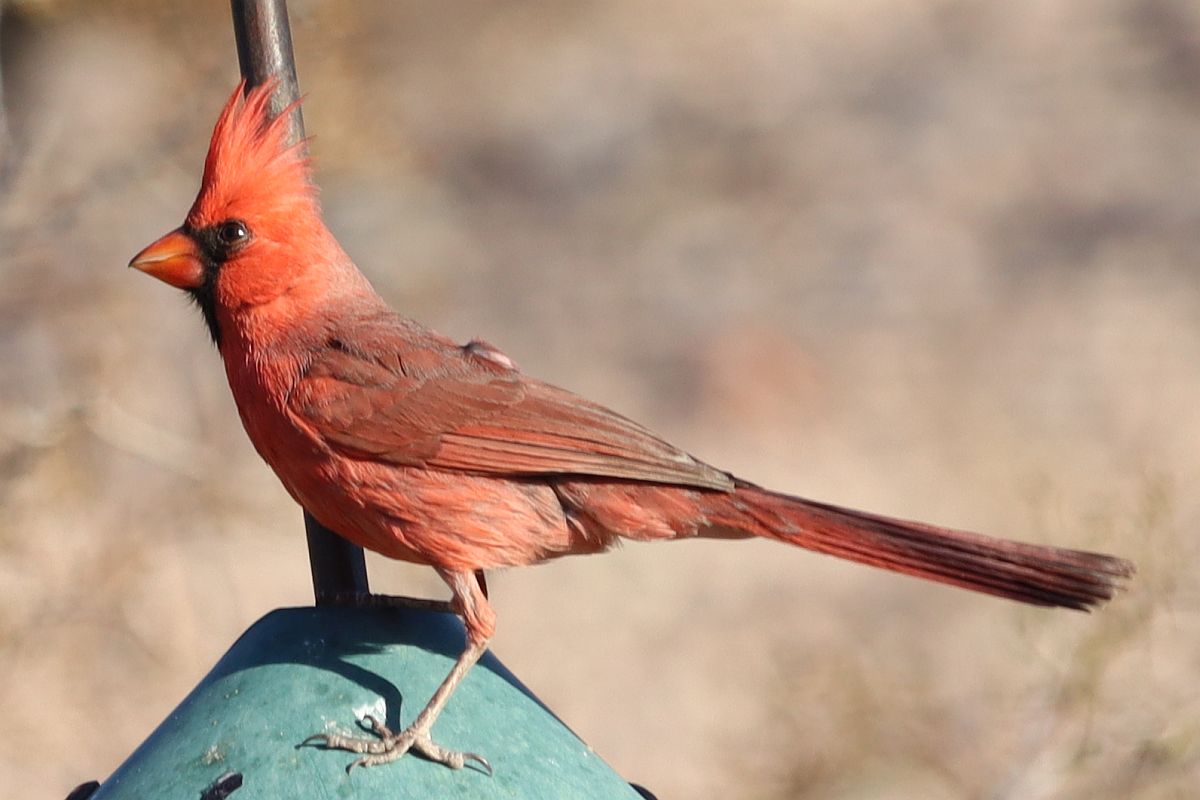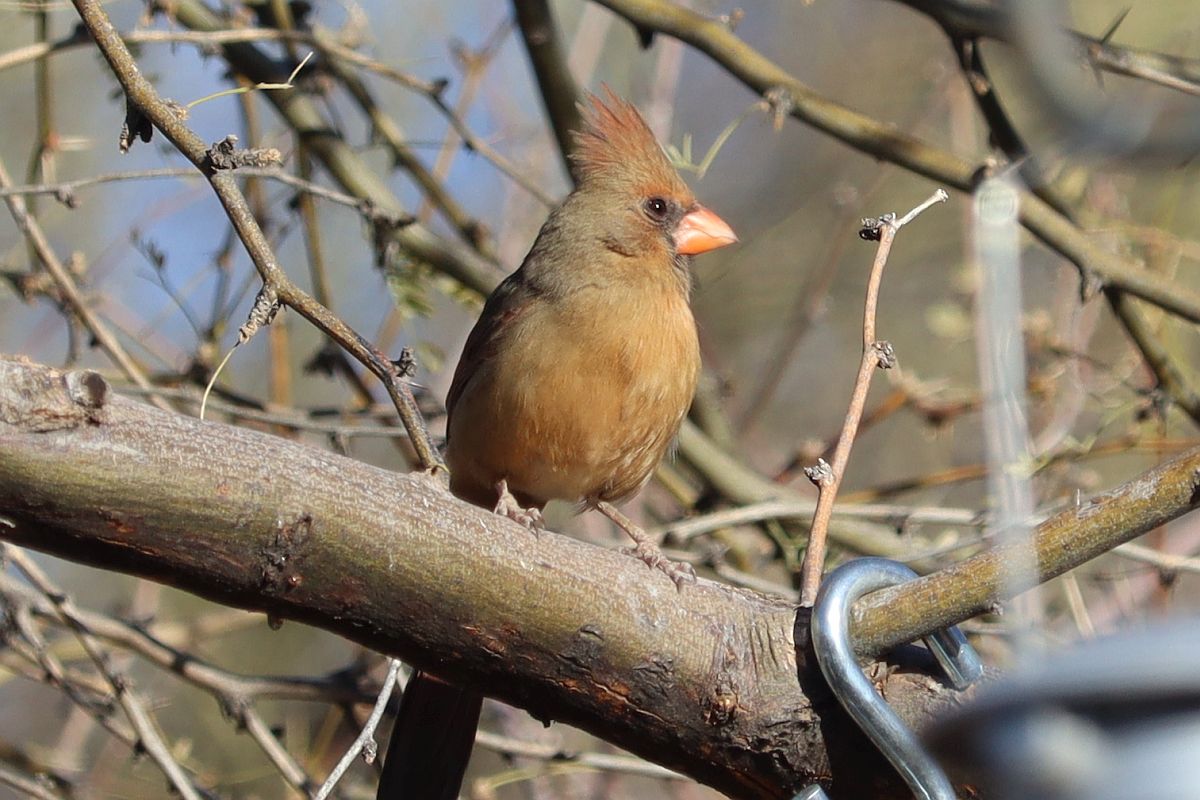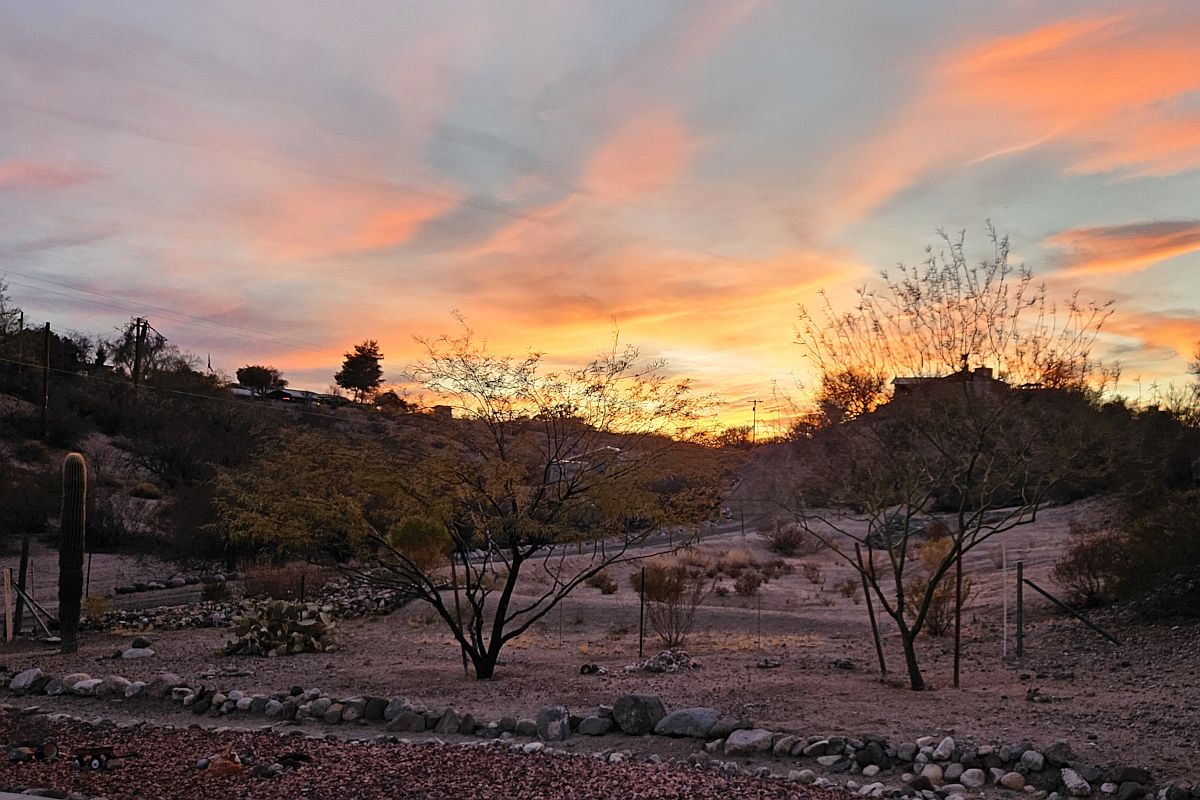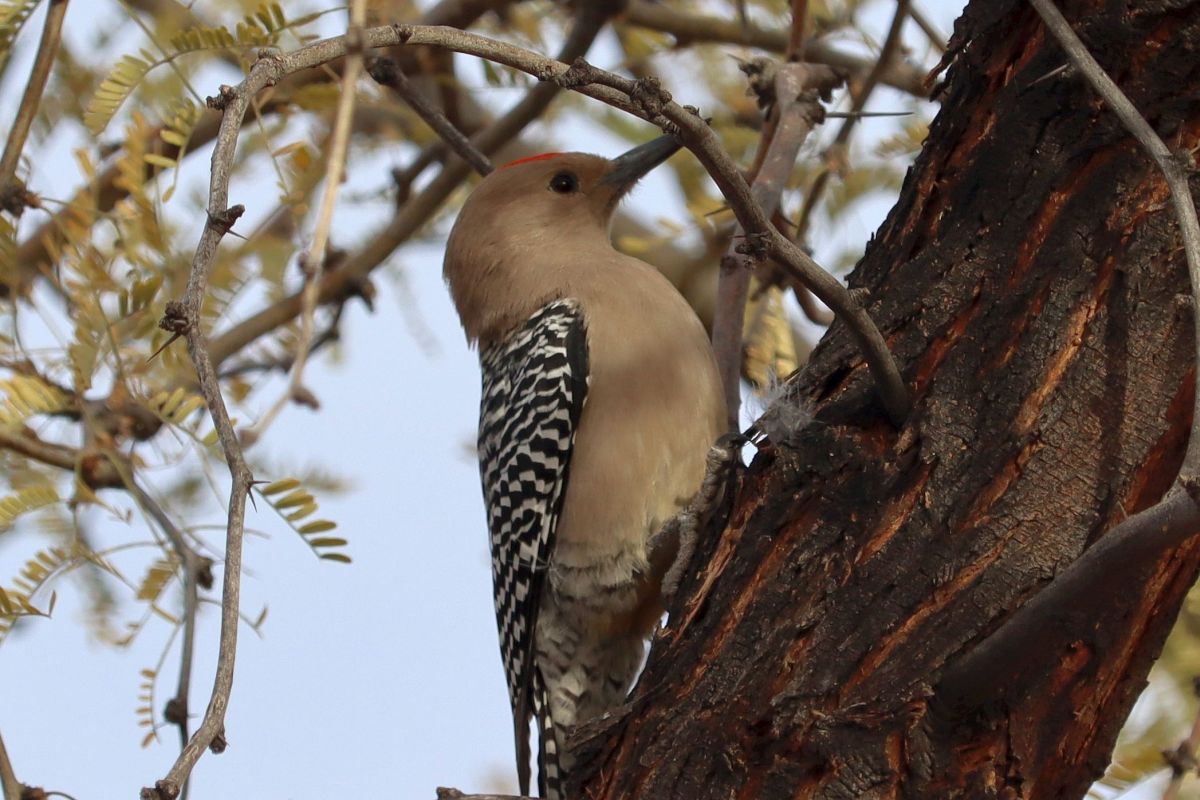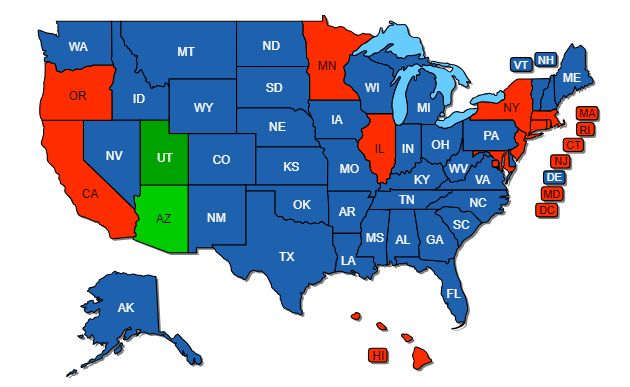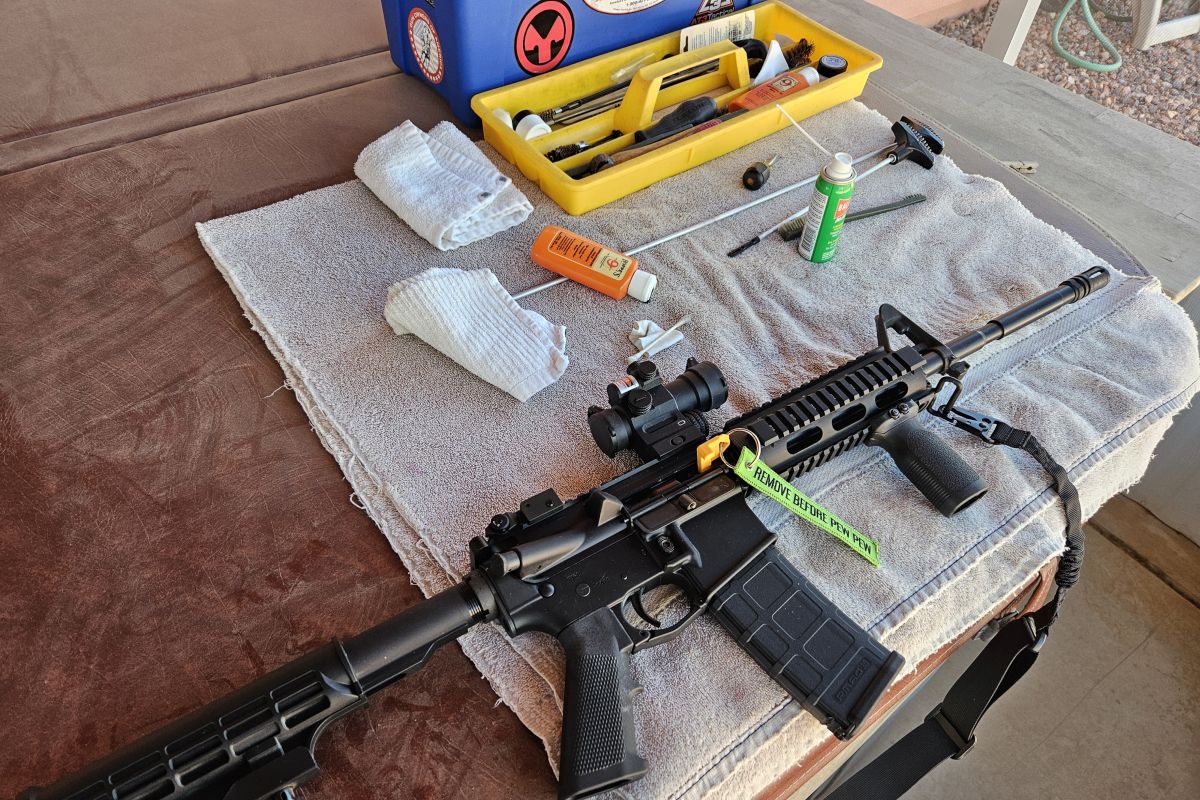This is a photo of one of the Nyjer Seed feeders in the back yard intended to attract Finches. You can see it was doing its job this morning when I snapped the photo.
On the left side of the feeder (stage right) is a House Finch, the male of the species. House Finches are commonly seen throughout the U.S. and Mexico, with some excursions north of the U.S. border.
The smaller Lesser Goldfinches are seen on the right and bottom of the feeder. This variety of Goldfinch ranges across much of the Southwest U.S. and Mexico. They seem to be permanent residents here in the Sonoran Deserts of Arizona.
Both species of finch like to snack on the Nyjer seeds. The oily content of the seeds seems to be nutritious for the birds. We buy Nyjer seeds for the Finches and a mixed seed variety for the other birds that hang out here. Nyjer is quite a bit more expensive than the other seed mixes, but we think it is worth the investment in order to keep the finches coming around.
Click on the image to enlarge in the viewer.

